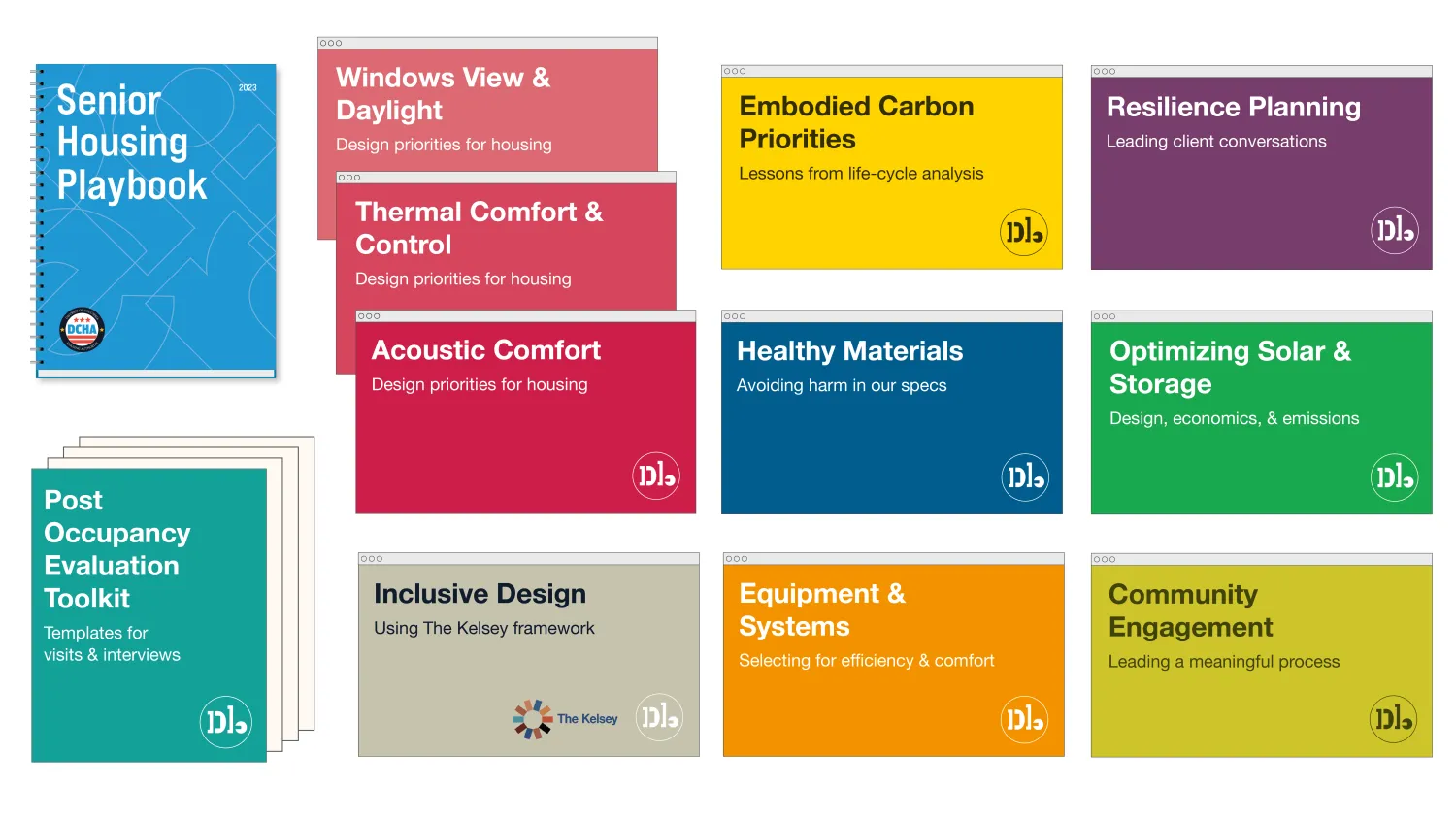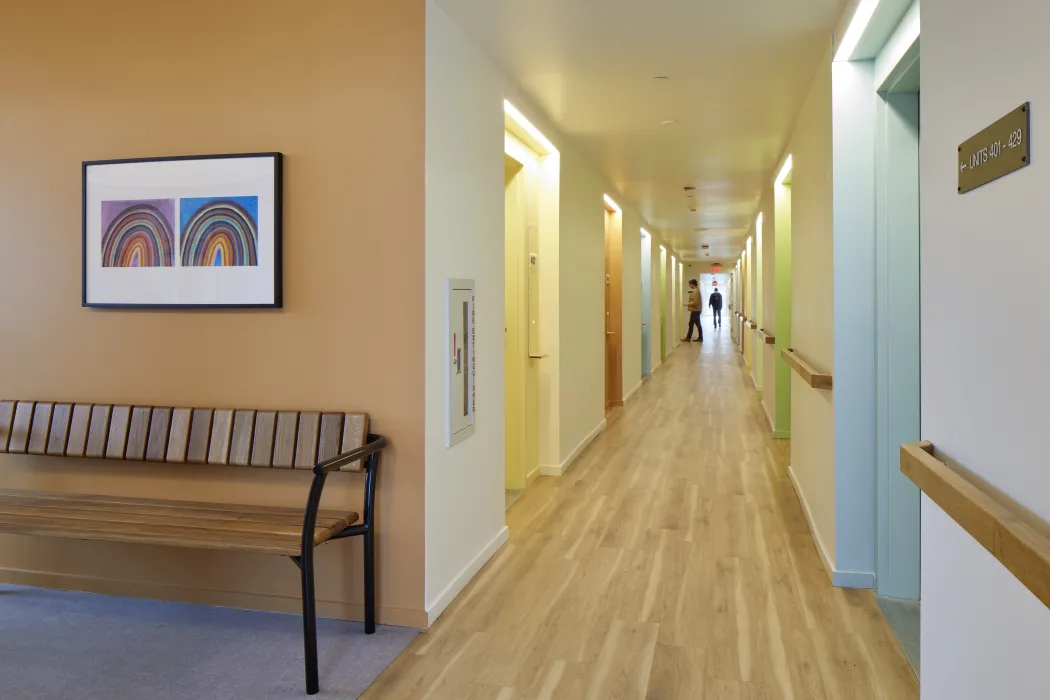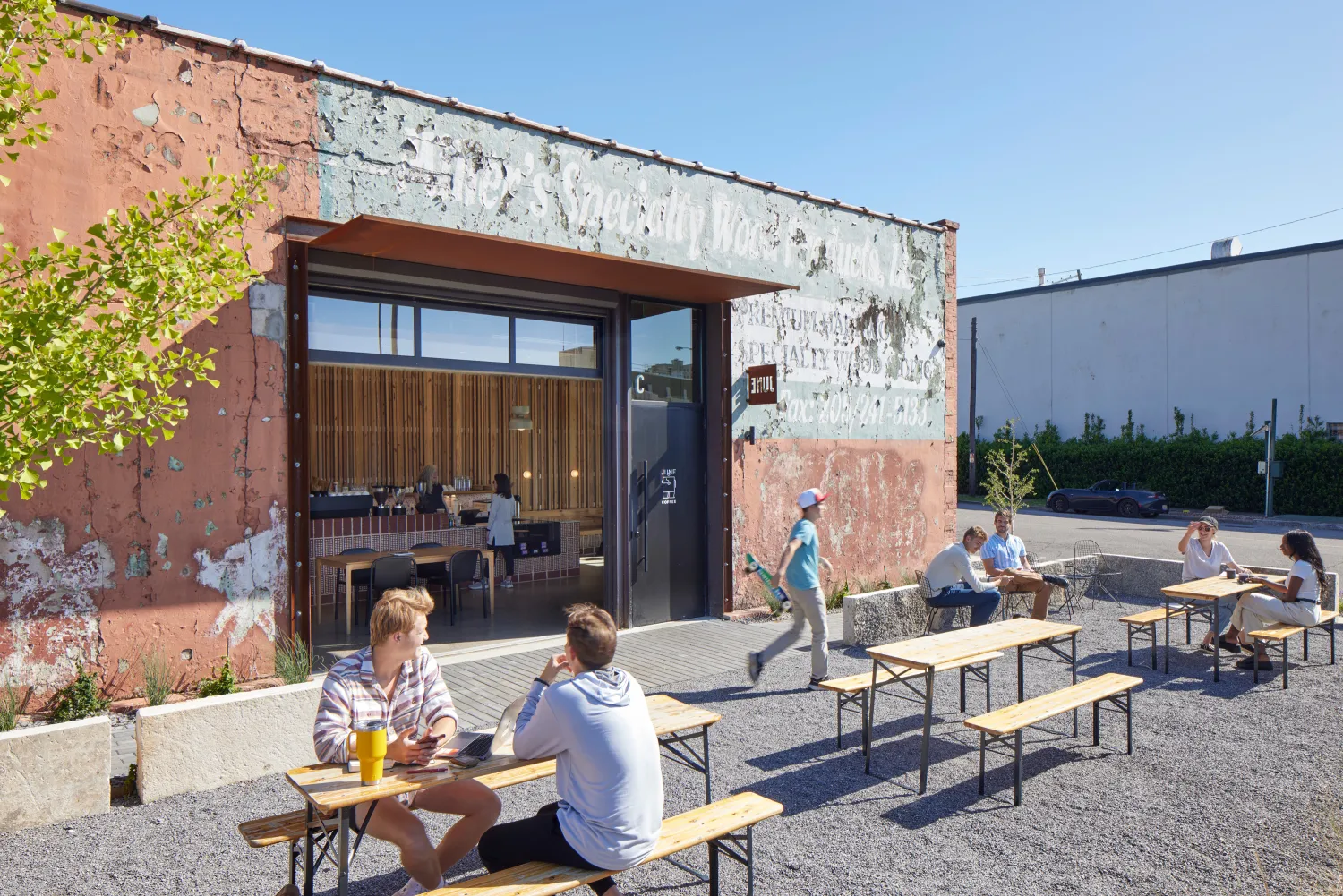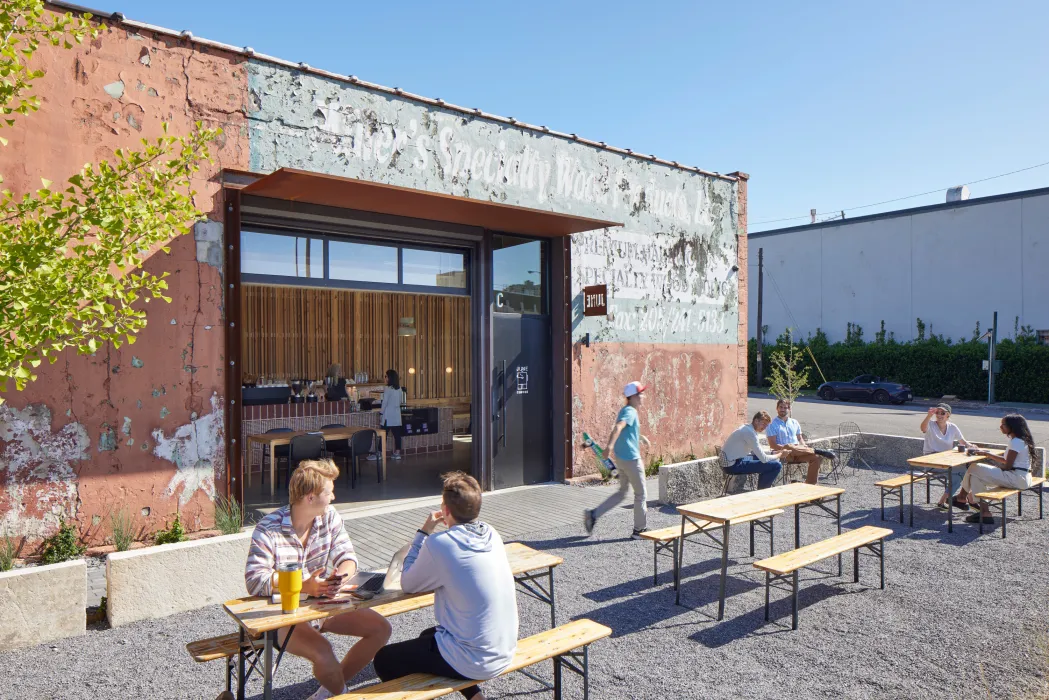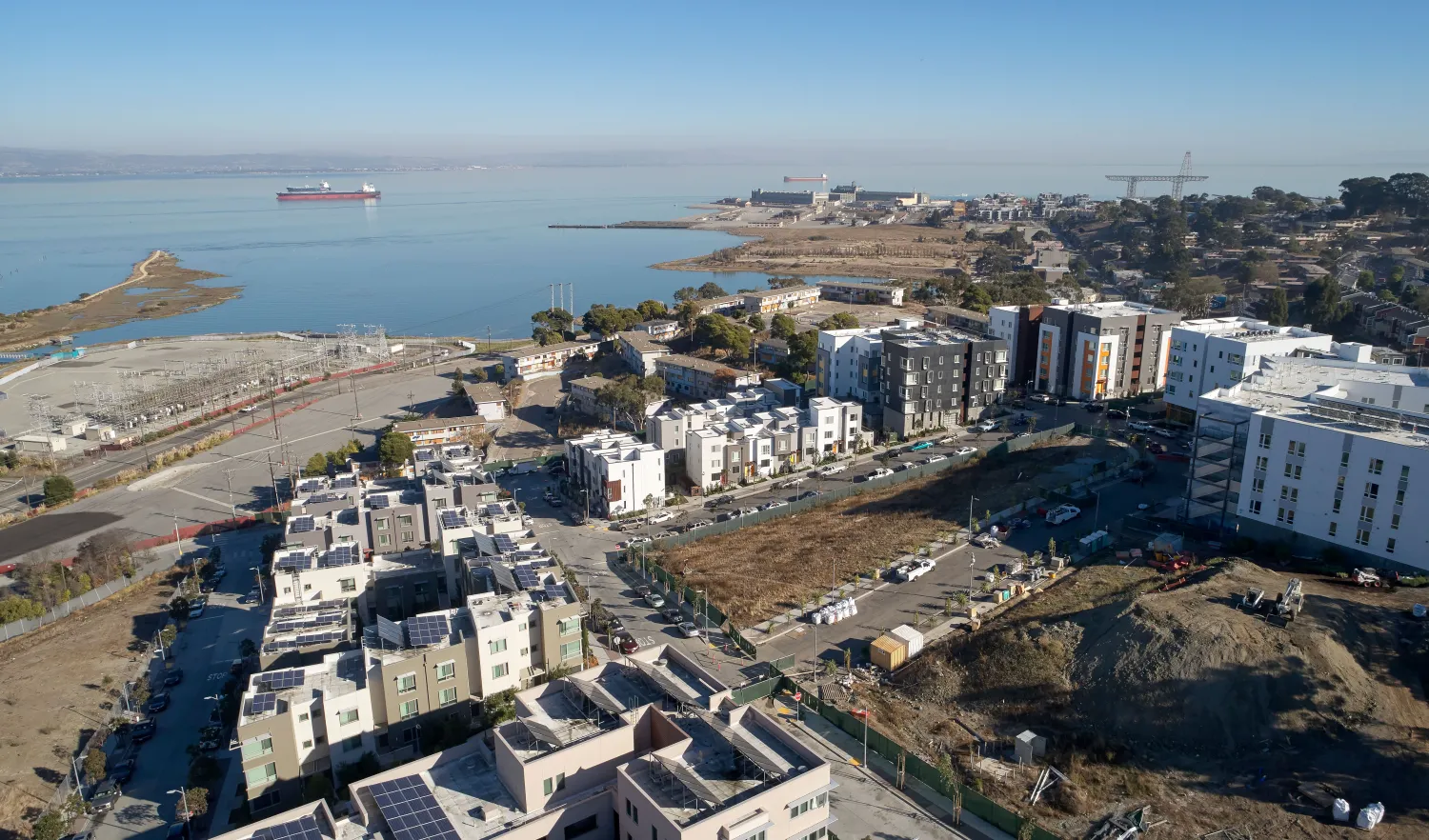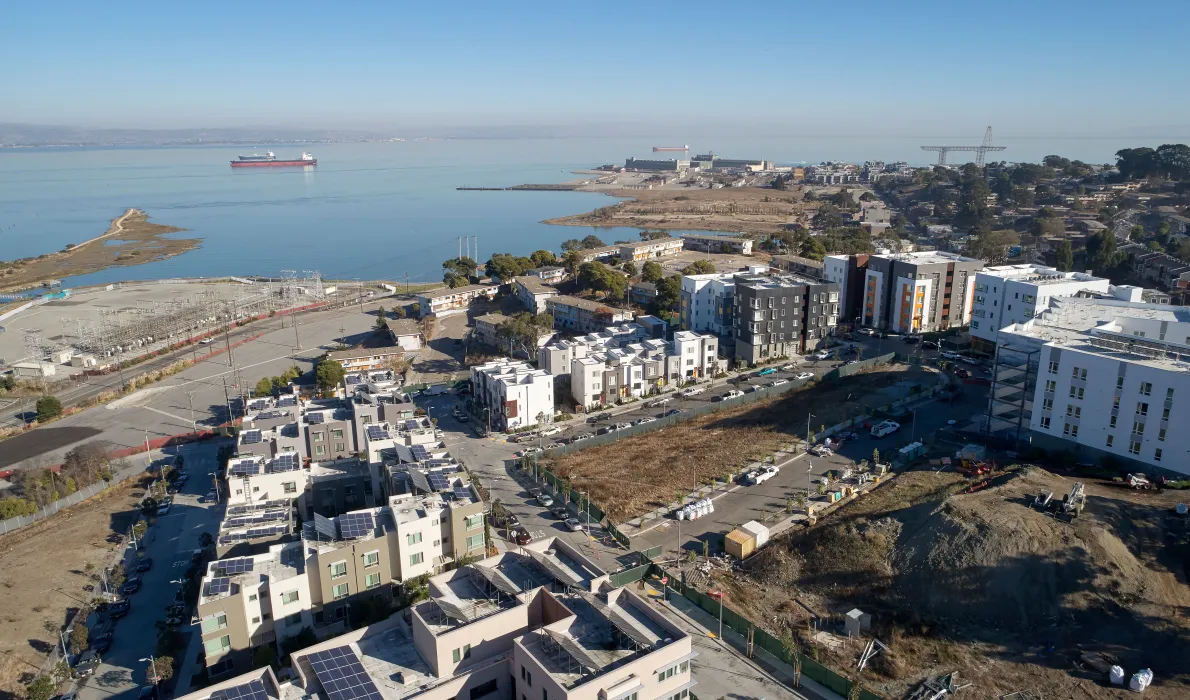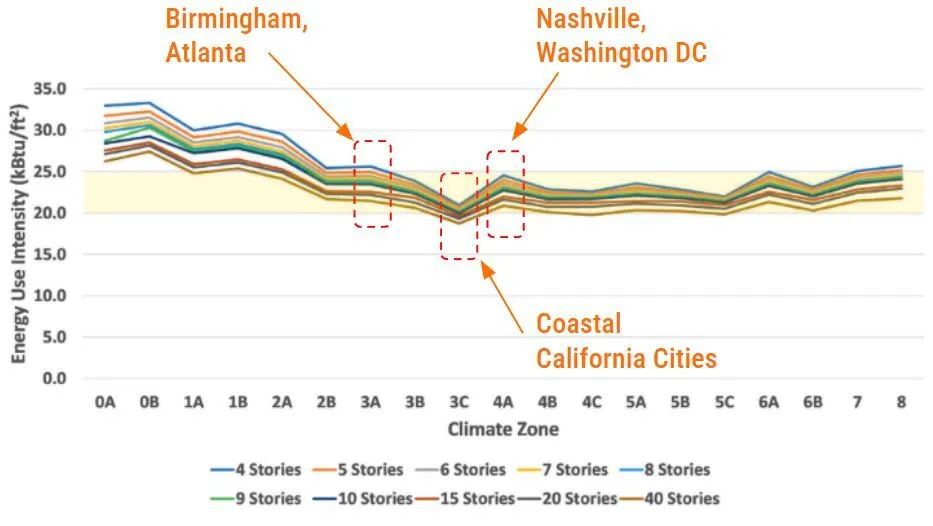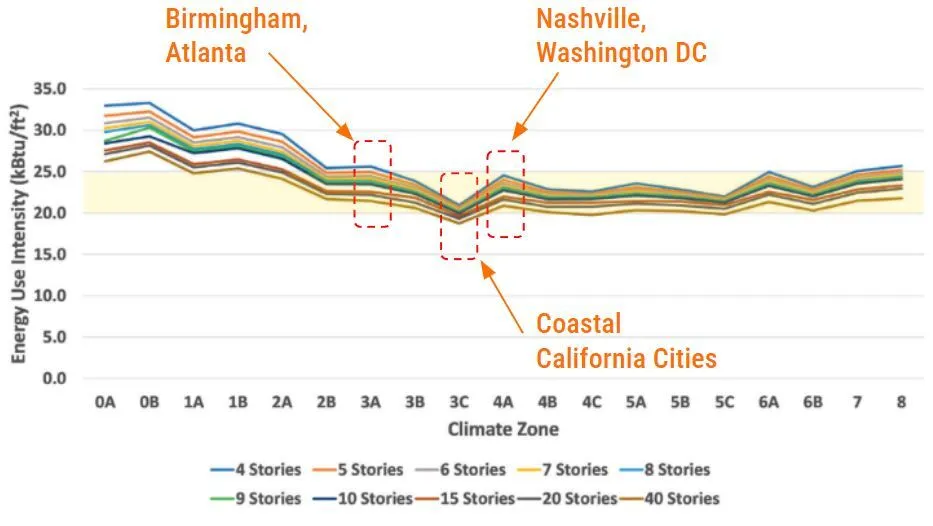
In 2021, DBA released a new Sustainability Action Plan that reoriented our goals around an authentic, home-grown approach to sustainable design for our practice. We began to focus on expanding our knowledge in specific ways in order to come to our clients with strategies that grow from the core of the social and ecological value of our community-based projects.
Our Action Plan organized efforts into five working groups: Human Experience, Healthy Materials, Energy Resources, Water & Ecology, and Alternative Materials & Advanced Construction. Each is guided by our home-grown vision for our projects and map back to the AIA Framework For Design Excellence.
More than two years in, we are happy to report on short-term goals achieved and to share our next set of actionable strategies to get us to our 2025 and 2030 goals.
A New Library of Technical Design Resources
One of the core goals in our Action Plan is “Designing for Human Experience”:
We actively listen to community needs and have the tools to prioritize strategies that foster stability, comfort, agency, and belonging for all people who inhabit our projects, including in the face of disruptive change.
During 2022-2023, we focused on developing a knowledge base to equip our architects with what they need to elevate the importance of human experience throughout our design process beyond purely programmatic objectives. This means we created a set of design best practices to achieve indoor environmental quality and passive performance; and for selecting equipment and materials tailored to the constraints and opportunities commonly encountered on a housing project. The suite of resources also includes best practices for leading a meaningful process with clients on resilience planning, community and resident engagement, and inclusive design.
These resources serve primarily as internal reference tools. However, we would be delighted to share them and open dialogue on these topics with our partners! If you are interested in organizing a show-and-tell on any of these topics, please don’t hesitate to reach out to us here.
Some of our resources and “How-Tos” are publicly posted on our website, such as our Resident Comfort & Resilience Guide and our Post Occupancy Evaluation toolkit. A deep-dive on our resilience planning efforts will be summarized in an upcoming blog post by DBA Associate Erin Feeney.
A Focus on Healthy Materials
As a signatory to the AIA Material Pledge, we are committed to showing preference for products that support human, social, ecosystem, and climate health, as well as to promote practices that support a circular economy and equitable society. Much easier said than done, our Action Plan has focused our early efforts on the “human health” dimension—eliminating chemicals that are linked to risks for building occupants. We have also zeroed in on controlling the proliferation of plastics, particularly PVC, in residential buildings to support both human and ecological health.
In the past several years our healthy materials group has raised the bar across all projects by fully incorporating known, low-cost preferred products established by resources such as ILFI Affordable Housing Materials List (downloadable from here), HBN’s HomeFree program, and our own research into our Basis of Design. Moving forward, we are expanding our product list, performance criteria, and industry involvement with leadership from our Interiors team. Learn more in a recent blog post by DBA Designer Jacqueline Lin.
Engaging with Existing Buildings
The last several years have brought a range of opportunities to lean into the rich resource that is the existing building stock. A number of building reuse projects—including the Bandsaw Building, home to DBA’s Birmingham office—have challenged us to pursue and hone an innovative design stance that relies on light-touch intervention while improving the indoor environment and tracking resource impacts. We have also been engaged in demonstrating high-performance retrofits of existing low-income housing through RMI’s REALIZE-CA initiative, funded by state and federal grants. In this powerful effort, we lend our deep experience in quality housing design in order to deepen climate action goals, while gaining experience with advanced technologies that hold promise for radical transformation if deployed at scale.
Data and Performance Metrics
The picture of carbon reduction and ecological impacts of housing and community development—the core of our practice—is complicated by the inherent but difficult-to-quantify carbon and ecological benefits of providing well-designed and well-connected urban housing. Which goal - housing or carbon reduction for its own sake - has greater weight or impact?
For us, targeting a zero carbon portfolio by 2030—as established by the 2030 Challenge—counterintuitively, takes our eye off the ball. Instead, we have set goals for energy and water efficiency, electrification, embodied carbon and ecosystem health that we think apply the right pressure to our practice: ambitious yet aligned with the core mission of thriving, resilient communities that maximize positive, local impact.
Here is a summary of some of our quantitative metrics and where we are on our way to meet goals.
ENERGY
Goal:
Achieve measured energy use intensity (EUI) of 25 kbtu/sf-year maximum on all projects by 2030 (excluding on-site generation). This target excludes PV generation and is based on ASHRAE AEDG Zero Energy Guide for Multifamily. Targets for coastal California could be more aggressive (20 kbtu/sf-yr) but the challenge is not technically collecting and verifying measured performance.
Status:
Predicted EUIs of 17-34 (25.3 avg) (from ~40 current and recently completed projects); Measured EUIs of 16-33 (from 6 recently completed projects)
41% of or projects are meeting our energy target in design
86% of our active projects are all-electric
83% of our active projects have rooftop solar
There are very few emerging or underutilized energy technologies for housing that can feasibly drive energy use much lower than our target without diminishing returns. And because we know we can reach this goal on well-executed and commissioned projects, we are currently focused on crafting and getting client buy-in on meaningful QA/QC scope, including commissioning, on all projects regardless of certification.
Adding renewable energy, thermal storage and battery storage to projects to draw down operational carbon is a major focus as we help our clients wrestle with new net metering tariff rules and battery requirements on new affordable housing projects without mainstream tools to evaluate the long-term economics of these investments.
EMBODIED CARBON
Goal:
Reduce embodied carbon by 25% by 2030
Status:
We have discovered our target, and are developing strategies
In a detailed embodied carbon analysis that we completed in 2023 for a typical podium apartment building, along with similar studies performed by our partners, we discovered that mid-rise wood-framed residential buildings are already relatively low-impact. Although there are exciting emerging products that we’d love to use to reduce embodied carbon of, for example, interior partitions and cladding, they yield very small overall benefit in terms of an overall percent reduction. We have revised our embodied reduction goal from 40% to 25% based on this research, with concrete and cement reduction, metal doors, and interior finishes emerging as the major focus of subsequent efforts. We are excited about the market transformation in the concrete market spurred in part by new CalGreen regulations, which will impact some of our projects starting this year.
WATER
Goal:
Develop our own target water use intensity (WUI, gallons/SF-year) and reduction goal for 2030 in the coming year.
Status:
64% of projects for which we have data exceed an industry benchmark WUI of 45 gallons/sf/year
The first two years have focused on data collection, and we have been successful in collecting actual water-use data from several completed projects and compared to an industry benchmark. However, given that our current practice generally takes advantage of the readily available and known upgrades of low-use fixtures and water-efficient landscape, defining our own target has proven elusive. For now we are focusing on quality assurance (like commissioned irrigation), and providing clients resources to audit and retrofit high-use properties.
ECOSYSTEM BENEFIT
Goal:
All projects demonstrate all of 9 of our own prescriptive design measures by 2030
Status:
We have defined 9 prescriptive measures and are beginning to track them across projects.
Our firm is motivated to better understand and make more meaningful ecological impacts through design. We have been introduced to a powerful screening and design platform by Ecosystem Intelligence that allows you to quantify the ecosystem benefits of a project. We hope to be able to harness the complexity of that tool to educate ourselves and advance our best practices. In the meantime, we have started to define and track a set of 9 simple prescriptive strategies, including bird-safe and dark sky compliant design standards. Our goal is for ecosystem benefit to play a more prominent role in all of our design discussions.
Please join with us
We welcome questions and conversation around these topics, and hope that we can inspire architects and developers to look closely at opportunities for meaningful sustainable design practices. If you are interested in partnering or learning more about the resources we have developed, please contact us.
Katie Ackerly, AIA, CPHC, is Principal and Sustainable Design Director at David Baker Architects, an award-winning firm known for elevating the design of multifamily housing. Katie came to architecture from a background in building science and energy efficiency policy, and holds a Master of Architecture and a Master degree in Building Science from UC Berkeley.
